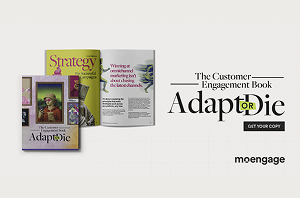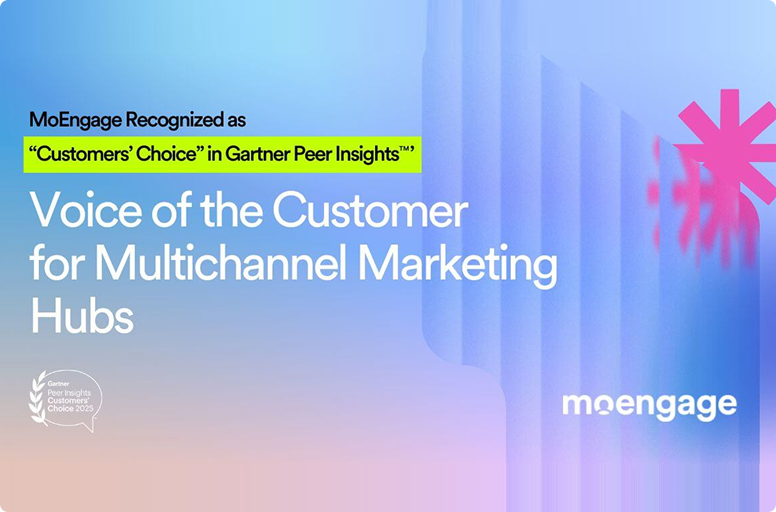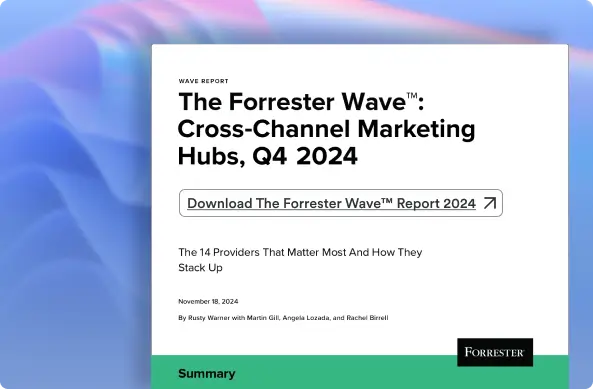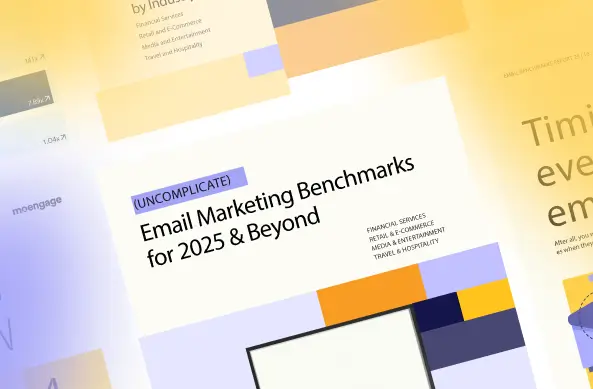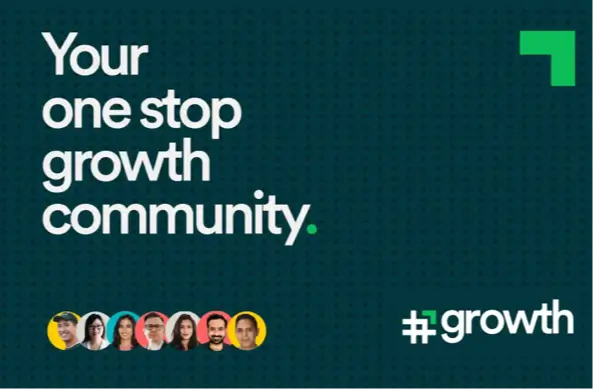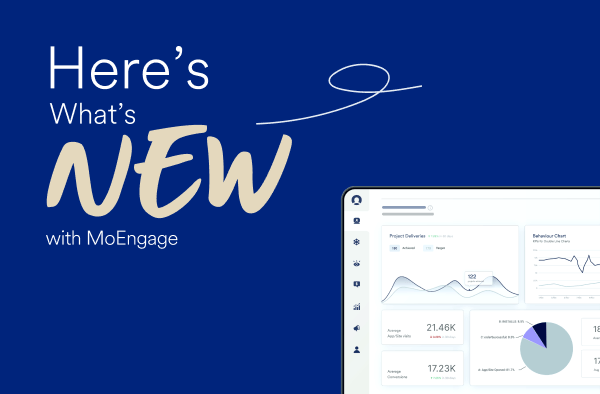Mobile App Personalization: What It Is, Why It Matters & Top Strategies
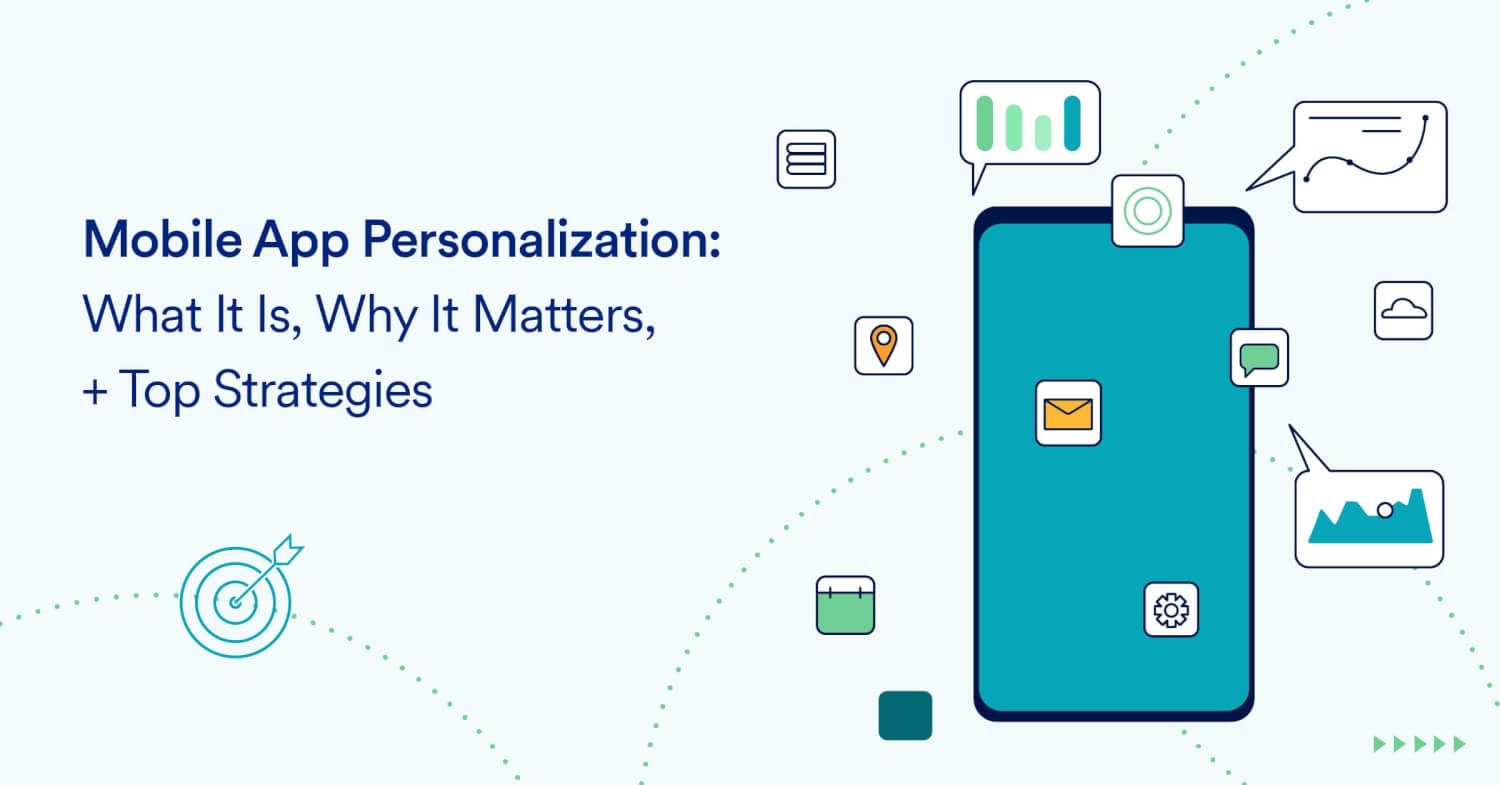
Reading Time: 11 minutes
App stickiness is all about having an interactive experience that your users love — and want to return to.
According to our Personalization Pulse Check Report, 56% of North American consumers want a curated shopping experience from the brands they shop from regularly. And 44.6% said they wanted this to be in the form of interactive mobile app experiences.
The fact is, customers are looking for personalized, tailored experiences that intuitively understand their preferences and intent. And if you can’t deliver that, they’ll look elsewhere.
The best marketers use mobile app personalization to curate a unique experience for their customers, fostering engagement and brand loyalty. In this piece, we’ll help you perfect your mobile app personalization efforts by covering what it is, why it matters, and how to implement a successful strategy.
To start, let’s define what we mean by mobile app personalization, how it works, and the most common personalization methods you should know.
What is Mobile App Personalization?
Mobile app personalization is the process of creating curated app-related experiences based on the user’s preferences, interests, and behavior. This includes tailoring in-app elements such as the interface, onboarding process, and content, as well as out-of-app elements like push notifications.
Marketers use app personalization to drive user engagement, improve retention, and increase conversions and revenue.
How Mobile App Marketing Personalization Works
The goal of mobile app personalization is to offer in-app experiences that are customized based on the preferences of the user.
To do this effectively, marketers need to gather and analyze information about purchase patterns, personality traits, preferences, and interests; create buyer personas based on customer segmentation; and then tailor hyper-personalized messaging and experiences for different buyer personas.
Below, we break down the three main steps of the app personalization process in detail.
1. Data Collection
The bedrock of any personalization strategy is the data it’s built on. Without accurate, reliable data, it’s impossible to implement a successful personalization program.
First, marketers collect and marshal app users’ data, including their profile information, app usage data, geographic location, purchase history, and social media activity. This data will be integral in developing the overall app personalization strategy, as well as individual campaigns and messages. By leveraging this data effectively, marketers can re-engineer the customer journey to focus on the customer’s wants and needs, infusing that into the overall app experience (and each individual campaign).
Perfecting app personalization user engagement is extremely data-heavy. A tool like MoEngage is vital for handling and processing high volumes of data quickly and reliably, so you can focus on optimizing your campaigns and messaging.
2. Customer Segmentation
Even the most accurate, abundant dataset is no good unless it can be properly leveraged to build personalized experiences that drive engagement.
The second step is to use the data you’ve collected to segment customers based on demographics, location, and previous activity and behavior. The more granular you can be, the more focused, nuanced, and refined your personalization strategies can be. Build consumer profiles based on common characteristics.
Make sure the segmentation you conduct and the personas you create produce results that allow you to develop unique, tailored marketing strategies and tactics that increase engagement.
3. Targeting and Personalization
The objective is to be able to deliver extremely targeted marketing campaigns that connect with your customers. To do that, you’ll need to channel the data you’ve collected and the segments you’ve created to harness and focus your personalized marketing efforts.
Now that you’ve collected data and segmented customers into accurate buyer personas, you can begin to actually use this data to create hyper-personalized experiences that resonate with your audience.
Go beyond simply swapping out the customer’s name, instead building truly personalized end-to-end experiences that entirely change the way each customer interacts with your app and brand. Leverage purchase history to suggest related or similar products use browsing data as intent to create personalized offers, and send notifications based on the user’s personal interests.
The more focused you can be on targeting your personalization campaigns, the more traction you’ll gain, which translates into greater engagement, deeper brand loyalty, and higher conversions.
Types of Mobile App Personalization
Whether you’re engaging in B2B or B2C personalization, there are several types of mobile personalization you can leverage to enhance the customer experience and tailor it to the individual’s unique preferences.
- Content personalization involves customizing the content (web, messages, and advertisements) that a customer sees based on their preferences, geographic location, search history, and any other relevant data points.
- UI personalization involves customizing the look, feel, and design of the app interface based on the customer’s needs and preferences. This can include dynamically adjusting the font size, color scheme, layout, and journey pathway that each user experiences.
- Push notification personalization involves customizing the timing, substance, and subject lines of push notifications based on the customer’s interests, behavior, and activity.
- Location-based personalization involves customizing product and service recommendations, promotions and discounts, and advertisements based on a customer’s geographic location.
- Behavioral personalization involves customizing the app experience based on the customer’s previous activity and behavior within the app, factoring in usage metrics to optimize the customer experience.
While you don’t have to do all of these, you should try to employ as many of these strategies as possible for best results. Some strategies will be more (or less) effective than others based on your industry and business case, so you’ll want to test different strategies to see what works best.
Why Mobile App Personalization is Important
Modern consumers demand a lot from their mobile apps, expecting an intuitive UI and seamless customer experience. And if they don’t get it, they’ll look somewhere else for what they want. Most customers expect you to know what they want, sometimes even before they do.
While your end goal is to increase conversions and revenue, mobile app personalization helps you get there by doing the following:
1. Increase Engagement and Retention
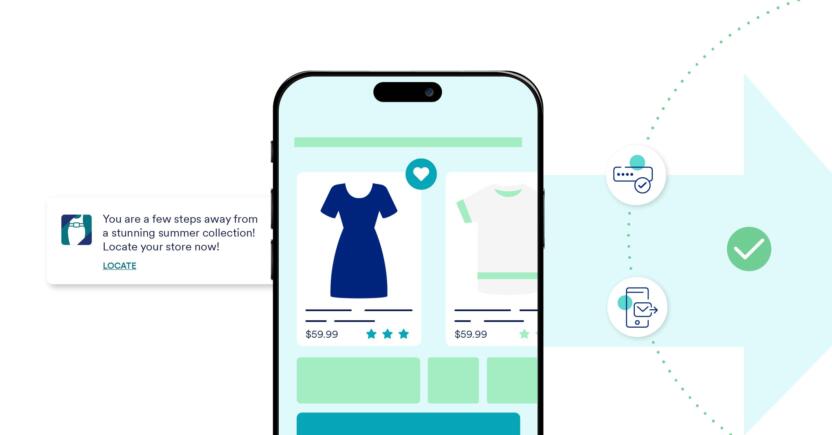
Mobile app personalization comes in many different forms.
Provide targeted product recommendations, inform customers about new launches, and upsell or cross-sell to boost spending. Use location-based alerts to engage local customers. Introduce a loyalty program to improve retention and cultivate brand loyalty. Run retargeting campaigns to win back lost customers and reduce churn.
The list is virtually endless, but all of these efforts have the same objectives: boost customer engagement, improve retention, and foster brand loyalty. Personalizing the app experience at each of these touchpoints will provide even more traction with your users, increasing app stickiness and user retention.
2. Enrich and Streamline the Customer Experience
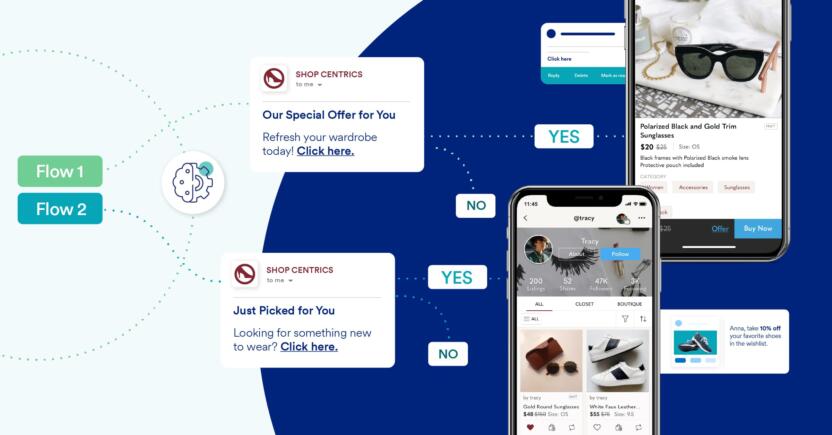
Rich, meaningful, value-driven customer experiences are key to winning over customers and keeping them around for the long haul. Personalization is the key to bringing customer experiences to a new level, improving customer satisfaction and (in turn) retention.
Consumers are more likely to continue to shop from brands that recognize — and acknowledge — their interests, offer relevant product and content recommendations, personalize their user experience, streamline their customer journey, and generally remember their preferences, needs, and feedback.
Personalized app experiences make this possible by empowering teams to tailor unique customer journey pathways according to their preferences and interests.
3. Boost Brand Loyalty
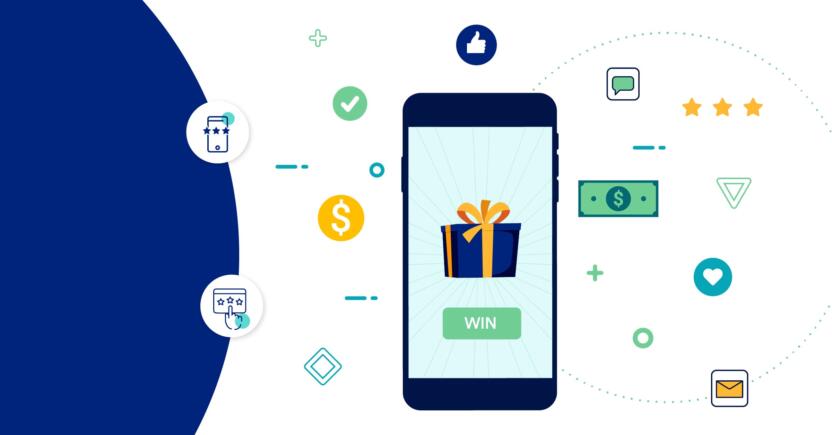
Sure, solidifying a single purchase is great, but building true brand loyalty that brings repeat purchases will mean true success for your business. At the end of the day, increased engagement and improved retention all lead to one thing: better brand loyalty.
If you’re not providing the personal touch that your customers want you’ll fail to connect with your customers and you’ll struggle to keep pace with your competition.
Personalizing product recommendations, marketing communications, and in-app user journeys will improve the customer experience, humanize your brand, and enhance the relationship you build with your customers. This outcome-focused relationship drives engagement, fostering loyal customers who will stand behind (and advocate for) your brand.
5 Mobile App Personalization Strategies to Improve Your Metrics
Successful app personalization doesn’t happen on its own accord; it takes serious planning and effective execution. Below, we cover five top strategies to improve your mobile app personalization program.
1. Leverage Cross-Channel Transactional and Behavioral Data
Personalization starts with understanding your customers’ patterns and preferences across all the channels they use to interact with your brand. If you silo this data, you won’t have a complete picture of the relationship you have with your customer, or a clear understanding of how they interact with your brand.
Make sure you collect — and amalgamate — data from multiple channels and touchpoints, including web, email, social media, in-store interactions, and more. Analyze the wealth of data you’ve collected as a whole to create customer segments based on demographics, preferences, and behavior, and then leverage these insights to personalize the in-app experience in a way that aligns with your other channels.
Example
The best marketers don’t just provide omnichannel experiences, they also collect cross-channel data to fully understand how customers interact with their company (both in-app and out-of-app).
Netflix collects a wealth of viewing data and user activity, no matter what device you’re watching on to ensure your experience is always curated based on your most recent activity — regardless of where you’re watching. This allows them to keep track of your recently viewed shows across apps, as well as serve the most relevant content to users.
2. Increase In-App Purchases with Relevant Product Recommendations
Personalized product recommendations boost in-app purchases by providing customers with relevant recommendations that fit their needs and interests. Don’t just take your best guess, use customer data to tailor product recommendations based on your customers’ preferences, purchase history, and past activity.
Continuously test and optimize your recommendations to better suit customers’ desires and increase engagement. Over time, this will improve customer retention and brand loyalty.
Example
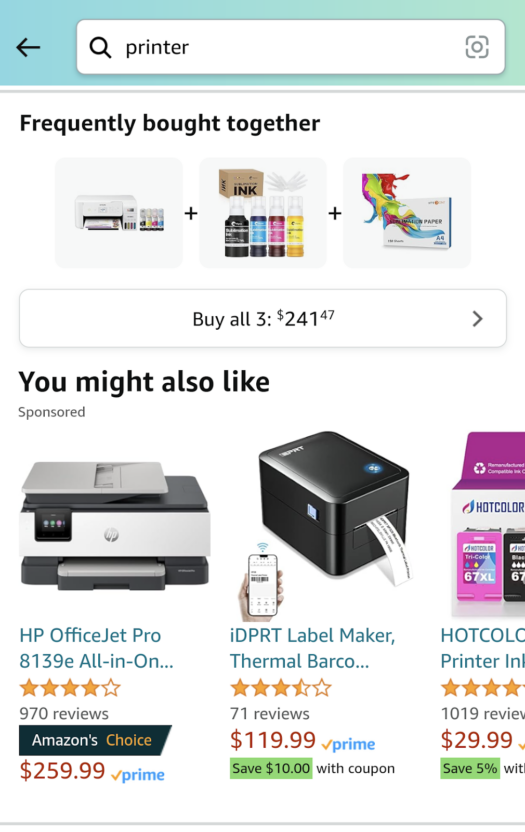
Amazon leverages consumer data to create hyper-personalized product recommendations that significantly increase conversion rates. Amazon not only recommends products “you might also like”, but they also create “Frequently bought together” bundles that pair items that are related.
Over time, they also offer customized product offerings based on your shopping and purchase history, as well as in-app activity.
3. Customize the Experience for iOS and Android
For the most part, you want to ensure that you maintain a consistent experience across different devices (web, tablet, and mobile) and operating systems (iOS and Android). That being said, these different channels aren’t identical by nature — nor should they be.
Personalize the mobile app experience for both iOS and Android, according to subtle differences in their operating system. Take advantage of platform-specific features and design guidelines to create a personalized experience for each platform, while still remaining true to the overall feel.
Optimize the look and design for different screen sizes and resolutions, using different fonts, icons, headers, button designs, and colors to create the best user experience for each audience.
Example
Popular apps like Instagram and Facebook have very minute differences based on the operating system it’s running on, down to screen size, font sizes, and even menu options. Integration permissions for your camera or contacts may be slightly different based on what features are called on different operating systems.
For the most part, these differences are extremely subtle.
4. Collect Data Responsibly
According to a McKinsey & Company study, 87% of customers won’t do business with a company if they have concerns about its security practices. And 71% said that if they found out a company had given away their sensitive data without their permission, they would stop doing business with them altogether.
To be able to extract information with accountability, marketers must demonstrate a thoughtful approach to data management and customer security.
Gain customer trust by openly communicating about how you plan on gathering and using data. Stay tapped-in to current customer sentiment and be aware of prominent privacy concerns for different types of digital data. Be aware of data privacy regulations like the CCPA or the GDPR, and make sure you stay compliant with any requirements.
Allow customers to opt out of data collection and provide them clear options for data deletion. Follow all necessary consent laws and obtain consent and permission whenever required. At a minimum, use adequate encryption and security measures when collecting, storing, and managing customer data.
Example
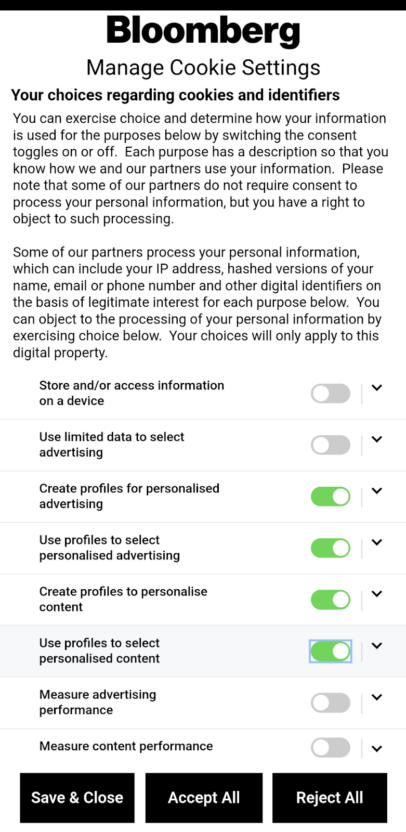
Bloomberg lets its app users opt-in to all cookies at the beginning of their user experience. They offer extremely granular options based on the types of data Bloomberg will collect and how they plan on using it, with some options directly affecting personalized advertising and content recommendations.
5. Conduct Data-Driven Personalization
Don’t just rely on your instincts; maximize the potential of your personalization efforts by rooting your insights and decisions in reliable data.
Set clear goals for your personalization strategy, and consider what metrics you’ll use to measure your performance. Use the data you’ve collected to draw meaningful insights and make data-rich decisions that help you improve your mobile app personalization. Continuously test and optimize using A/B testing, allowing you to identify what resonates with your target audiences (and what doesn’t).
A data-focused approach to hyper-personalization will help you hone your mobile personalization efforts and improve your chances of success.
Example
Netflix doesn’t leave any content recommendation to chance. They are constantly analyzing user data to better understand what each individual customer wants, and serve them more relevant, appealing content recommendations. They leverage previous viewing history, star rating feedback, and every in-app click to better understand what their customers are looking for.
More than that, they are consistently improving the UI based on usage data, identifying where different users get held up and streamlining the customer journey accordingly.
5 Challenges of Mastering Mobile App Personalization
Mobile personalization is a powerful tool for increasing engagement, loyalty, and revenue — but only if it’s done right.
Unfortunately, there are numerous obstacles along the way. Below, we cover the top 5 challenges that developers and marketers face when implementing (and mastering) personalization in mobile apps.
| Key Mobile Personalization Challenges | What These Challenges Mean |
| 1. Data collection and privacy concerns | Concerns around data privacy and security need to be addressed proactively, as customers may be reluctant to share personal information with mobile apps. |
| 2. Data quality issues | Marketers often struggle with data accuracy and completeness, and are constantly updating and refining data to manage it effectively. |
| 3. Poor technology infrastructure | Implementing and maintaining a mobile-first infrastructure can be challenging and resource-intensive, especially if you lack access to a robust technology infrastructure and marketing automation such as data analytics tools, machine learning algorithms, and real-time decision engines. |
| 4. Low-quality customer experience | Marketers may be unable to balance the benefits of personalization with the potential risks of overwhelming customers with too many options or irrelevant recommendations. |
| 5. Lack of organizational buy-in | An inability to drive cross-functional collaboration and alignment across the organization and get stakeholder buy-in drastically hinders the success of your personalization efforts. |
Fortunately, you don’t have to face these challenges alone.
Power App Personalization with MoEngage
Modern consumers have high expectations from their mobile apps, and if they aren’t getting what they want, they’ll look for someone else who can provide it. To keep user attention, foster engagement, and build brand loyalty, companies need to personalize their mobile app experiences based on their customer’s preferences, interests, and behavior.
Make sure your mobile app experience aligns with your complete customer experience, factoring in omnichannel communication across web, social, and even in-person. Collect accurate, reliable data, and use that data to build buyer personas that reflect your audience through deep customer segmentation. Target customers using hyper-personalization and create customized experiences, recommendations, and messages that align with your users’ wants and needs.
Mobile app personalization enriches and streamlines the customer experience, increases user engagement and retention, and boosts brand loyalty. All of this leads to increased conversion and revenue.
MoEngage’s Customer Engagement Platform enables you to connect with customers via personally designed and perfectly timed in-app messages and mobile push notifications. With deep customer insights, you can make data-driven decisions about customer journey orchestration and marketing campaign optimization. And with MoEngage Personalize, you can adapt your app’s layout, add AI recommendations, and tailor your content one-to-one based on customer data.
Schedule a demo today to learn how MoEngage can help you personalize mobile app experiences to increase engagement, loyalty, and revenue.

